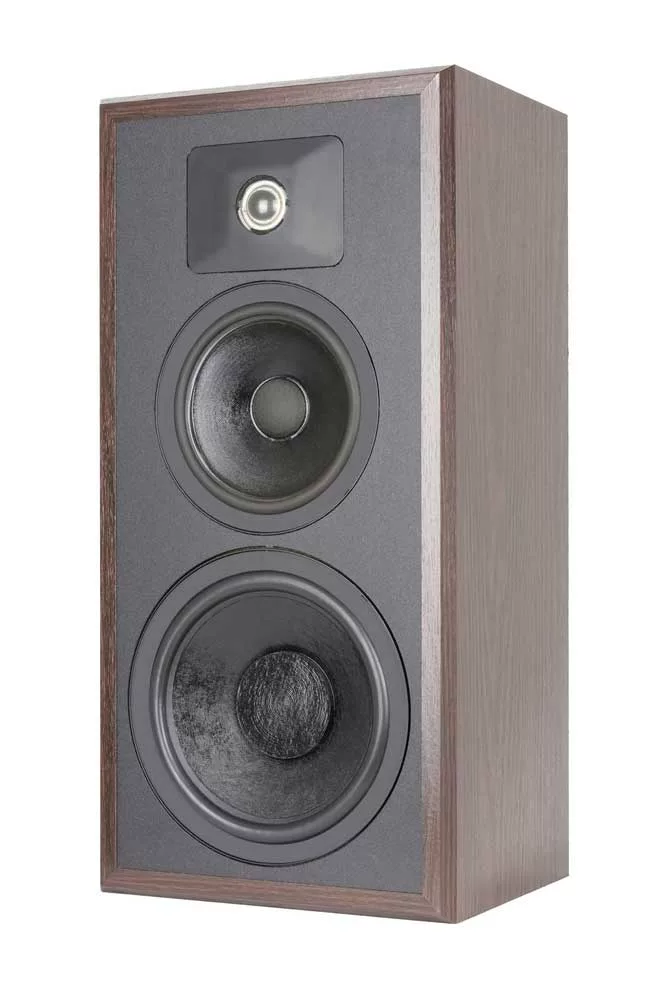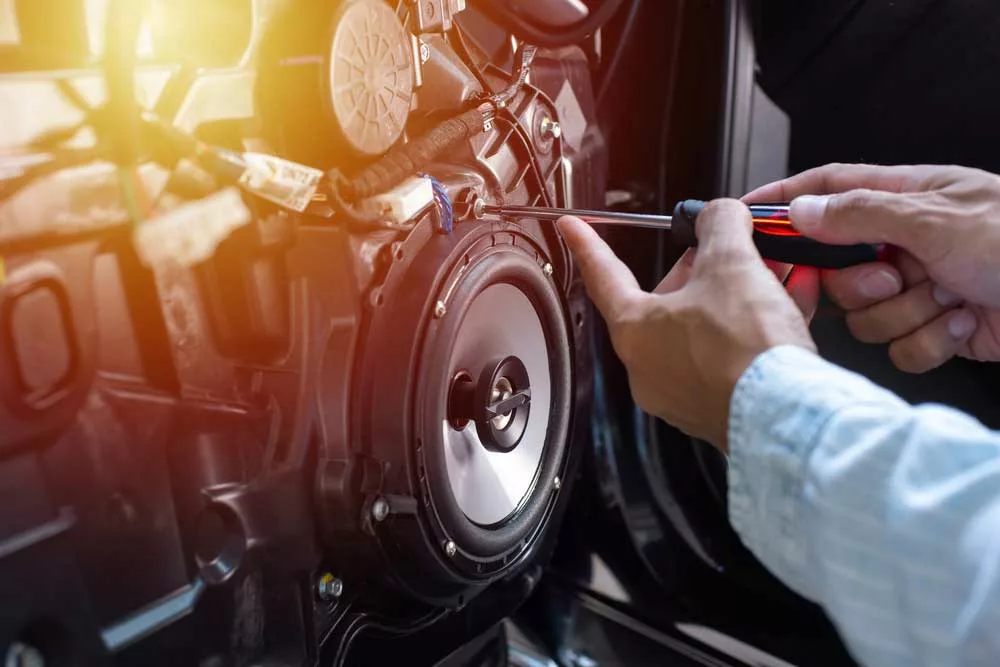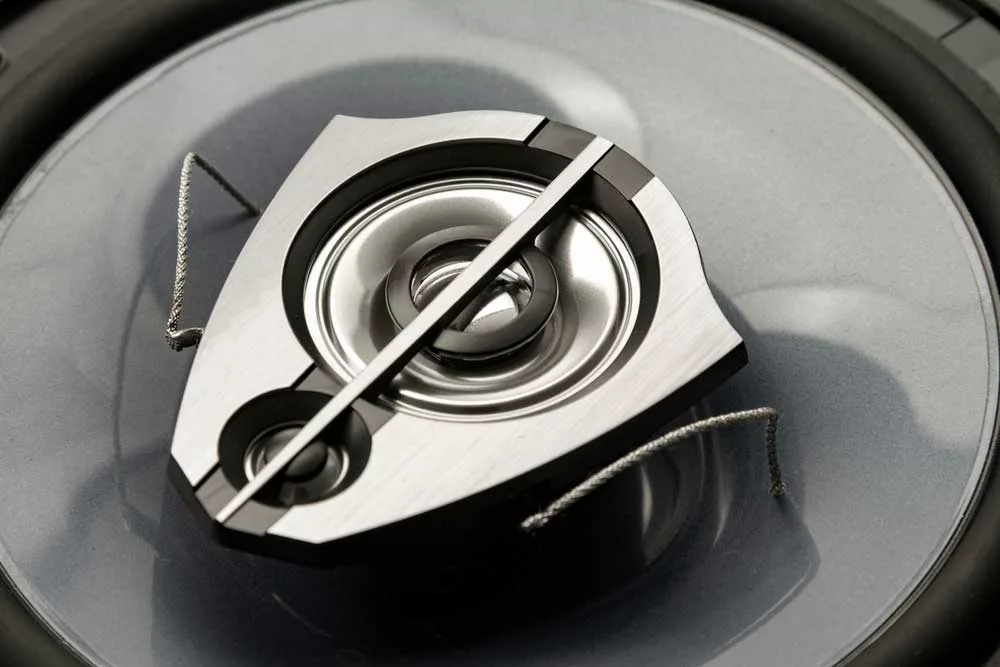2 Way vs 3 Way speakers is the most popular speaker designs today. The label is to distinguish the speaker system based on the number of speakers (drivers) they have.
However, the difference in configuration results in a significant difference in sound quality. This cheat sheet reviews the differences in detail and helps you decide which will suit your needs.
Table of Contents
- What is a 2-Way Speaker?
- What are 3-Way Speakers?
- 2-Way Vs. 3-Way Speakers – Major Differences
- FAQs
- 2-way or 3-way speakers – Final Thought
What is a 2-Way Speaker?
A 2-way speaker has two drivers. A full-range driver or woofer and a smaller high-frequency driver called a tweeter. When a speaker system features multiple drivers, a crossover splits the input sound signal into different frequencies that each driver specializes in.
In a 2-way speaker system, a crossover network directs high-frequency sound to the tweeter and lower range to the woofer cone.
That said, sound signals leaving a 2-way speaker have only been amplified for bass (usually below 200Hz) and high frequencies (above 2,000Hz).

Two-way speaker system
Pros of a 2-Way Speaker
- Great for coaxial mounting
- Simple in design and easy to install
- Relatively cheaper than 3-way speakers
Cons of a 2-Way Speaker
- Insufficient sound details
- Lack of high-frequency output if the tweeter is damaged
What are 3-Way Speakers?
A 3-way speaker has three speaker drivers. These include a large cone (woofer) for low frequencies, a mid-range driver (super sweeter) for medium frequencies, and a tweeter for high frequencies.
The signal enters the speaker through an integrated crossover, splits the signal into three frequencies, and then transmits them to the appropriate drivers.

3-way speaker system
Pros of a 3-Way Speaker
- Great for component system design
- Overall better sound quality
- Wide range of application
Cons of a 3-Way Speaker
- Crossover requirements are more demanding
- A more complicated design and maintenance
- Relatively higher cost
2-Way Vs. 3-Way Speakers – Major Differences
- Car Sound System
A car audio system comprises two categories:
- Coaxial system design
- Component system design
2-way vs. 3-way – Coaxial system design
A basic coaxial speaker design for a two-way system consists of a large woofer and a smaller tweeter in a single-speaker box. A 3-way coaxial system, on the other hand, has an additional mid-range driver or super tweeter.
You can assemble a 2-way coaxial speaker system by mounting the tweeter in the center of the woofer cone. For a 3-way coaxial speaker design, you mount the tweeters side by side over the large woofer cone. This makes it easier to mount them in an existing car speaker enclosure during installation.

Installing coaxial 2-way speakers set up to a car
In the case of a 3-way coaxial design, the arrangement can block a significant amount of sound from the woofer cone. This may interfere with volume and clarity.
Besides, Coaxial systems only utilize passive crossover. Since passive crossover works best when splitting audios into highs and lows, it won’t do a great job where mid-range is involved. That said, a good quality two-way speaker is much better than a 3-way speaker in a coaxial system.

Coaxial 3-way speaker
2-way vs. 3-way – component system design
Component two-way speakers can come in multiple tweeters, full-range speakers, and additional crossover networks. The multiple tweeters come ready to be mounted on other parts of the vehicle instead of the center of the full-range cone. Most cars already have cutouts for these speakers. Usually higher up on the door or in the corner of the dashboard.
The full-range cones will replace the existing vehicle speakers. You will have to connect each speaker to a separate external crossover network, which you then wire to the car stereo speaker output.
The additional crossover improves the accuracy of each frequency. For that reason, the 3-way system benefits significantly from this arrangement as the mid-range becomes more accurate.
Besides, the component 3-way system enables you to better position individual tweeters and woofers. This creates a different sound experience.
- 2-Way Vs. 3-Way Speakers: Other Applications
Home Theater
A home theater setup requires at least three speakers: left, right and center. With this setup, you need to pair more 2-way systems than 3-way speakers to cover the full range of sound needed for a home theater.
Pairing speakers for home theater comes with the challenge of balancing the sound. You must ensure the woofers don’t produce excess bass and the tweeters balance.
Component 3-way speakers will make your work easier since you’ll do less pairing. Besides, three-way speakers generally offer high and smooth sound quality.

Three-way speaker pairing for home theater
Audiophiles
If you’re a Hi-Fi enthusiast, you’ll likely want speakers that provide the best audio quality even in low frequencies. This would mean choosing a three-way speaker for full-range sound and reproducing low frequencies.
Tower Speakers
A pair of tower speakers would be a great place to use 2-way speakers. They are smaller and less expensive than a 3-way speaker pair. However, a 3-way pair would be better if you want to rock the house. It would save you space while still ensuring you hit all the frequencies.
Floor Standing Speakers
A pair of floor-standing speakers consists of two speakers on the left and the right side. They are supposed to hit all the frequencies.
We specifically recommend a 3-way speaker since it can achieve the full range of sound needed for a floor-standing speaker. A 2-way speaker would only be able to cover the low and high ranges. It won’t cover the mid-range, resulting in relatively lower audio quality in some tracks.
FAQs
- Do 3-Way Speakers Have More Bass?
Yes, 3-way speakers have more bass output than 2-way speakers. This is because 3-way systems have designated speakers for your high, mid-range, and bass. This makes the speaker’s response curve much smoother than that of a 2-way speaker.
- Which is Better, 3 Way or 2 Way Speaker?
3-way speakers offer a more clear and more accurate listening experience. As long as your 3-way speaker is of good quality, they usually outperform the two-way speakers in several aspects. However, there are aspects where two-way systems are ideal such as coaxial system design.
2-way or 3-way speakers – Final Thought
These two types of speakers’ strengths and weaknesses depending on your specifications and preferences. For instance, 3-way speakers are the best option if you prefer quality over budget. In addition to the budget, 2-way speakers are also ideal for those who enjoy the sound with less bass.
But from a general point of view, a 3-way speaker is the best option as long as it is of good quality. It outshines the 2-way system in several crucial aspects, including sound clarity and quality. Happy shopping and listening!
